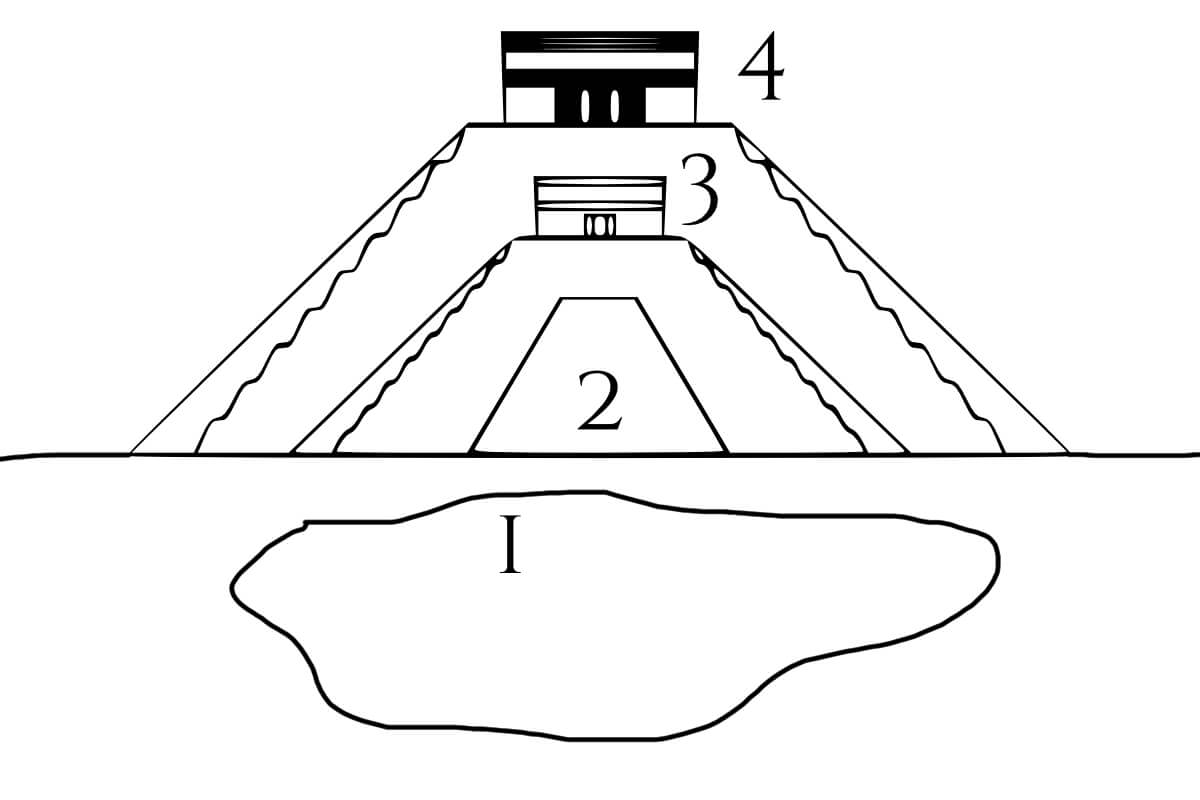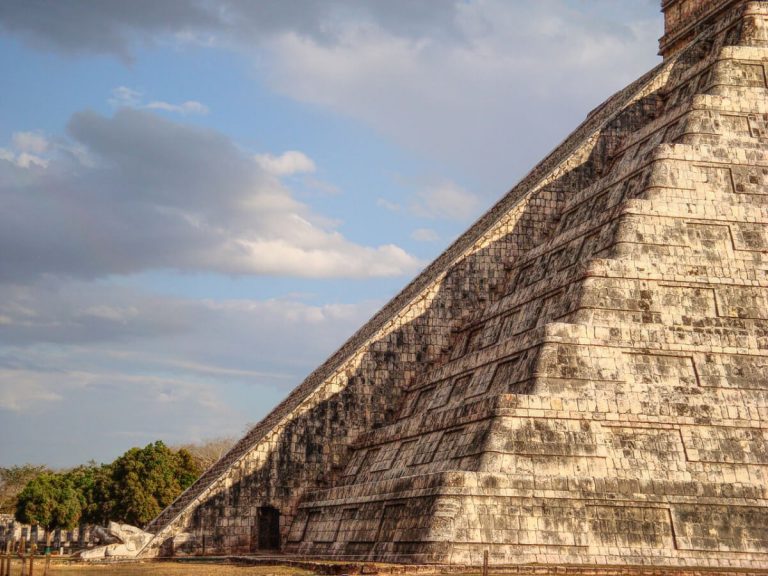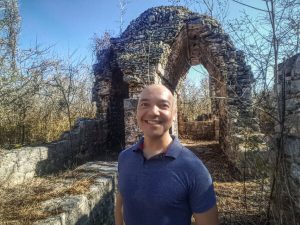Facts about Chichen Itza are one of the most interesting and basic things to learn when visiting this Mayan Archeological Site. Learn 10 Facts about Chichen Itza from the Pyramid in Chichen Itza, the Sacred Cenote, and speaking about the Pyramid and the Cenote, did you know there’s a hidden Cenote right under the Great Pyramid of Chichen Itza?
Learn more about this fact and many more in this list I’ve written for you.
Facts about Chichen Itza
A Cenote under the main pyramid of Kukulkan
This is the most recent of out top 10 Facts about Chichen Itza. In August 2015, archaeologists discovered a cenote under the Kukulkan pyramid
This finding confused the researchers, but for an archaeologist expert in submarine archeology, the answer was simple:
The Mayans knew about the existence of the cenote and built the pyramid over it because the Mayans wanted to represent the universe with their constructions.
The pyramid rises equidistantly between four cenotes, one to the north, another to the south, another to the east and the fourth one to the west.
This new finding would be the fifth cenote, the “axis

The layered Pyramid of Chichen Itza
Like other pre-Hispanic archaeological sites, constructions of the cities were covered during a second, and sometimes more residential phases.
In this case, the first Pyramid in Chichen Itza was built between the years 500 and 800; and again, by the third and currently visible stage, developed over the years. 1,050 and 1,300.
Ceremonial objects at the bottom of the Sacred Cenote
Various research teams have found ceremonial objects at the bottom of the Sacred Cenote, along with animal and people bones whose ages range from 3 to 55 years.
Its origin, however, is uncertain. There are theories that the Mayas practiced human sacrifices; others believe that in reality, these remains reached the bottom of the cenote as part of funerary rituals that would have arrived there after they had died.
Others say that the purpose of throwing living beings was not to cause their death but to get them to intercede with the lords of the underworld.
What they do agree on, is that all these rituals were intended to mediate with the entities of Xibalbá to ensure rain and good harvests.
The Sound of the Quetzal

There is an electroacoustic effect that occurs in front of a staircase of the main Pyramid of Kukulkan in Chichen Itza. When a person claps, the sound bounces in the form of a distorted echo and generates a sound that simulates the singing of a Quetzal.
This new attraction was discovered at the end of the twentieth century by the tour guides of the site.
The Pyramid of Kukulkan has a total of 365 steps

The temple of Kukulkan has four staircases, of 91 steps each, which in total sum 364. With the upper platform, it adds up to 365 in total.
Each step represented the days of the Haab Mayan calendar, which fits perfectly with the calendar we use today, the Gregorian calendar.
A World Heritage Wonder

Chichen Itza was declared a World Heritage Site by UNESCO since 1988 and in 2007, it was considered as one of “The New Seven Wonders of the Modern World”, as part of a private initiative where people chose the sites that interested them the most.
Chichen Itza’s meaning
Just like many other translations and history “facts”, there are more than one accepted by researchers. In this case, we’re gonna take a look at the 2 main translations of “Chichen Itza”.
- Its name comes from the Mayan words “chi” (mouth), “che’en” (well), “itz” (magician or sorcerer) and “ha” (water). Thus, Chichen Itza could be translated as “The mouth of the water sorcerers’ well,” referring to the Sacred Cenote, the great natural well that the Mayans considered one of the main entrances to Xibalba, their underworld.
- The meaning of Chichen Itza comes from the Maya Yucateco: uchi’ch’e’enitza’, the “City of the Itaes”.
Chichen Itza was bought by an American

At the beginning of the 20th century, the American Edward Herbert Thompson bought the property where Chichen Itza is located, mainly to drain the Sacred Cenote and extract numerous objects like jewelry and utensils made of gold, copper, and jade.
After various actions from the Mexican government, today it is owned by the State of Yucatan.
Some of the archaeological pieces discovered by Thompson were also returned to Mexico.
The largest Ball Court in Mesoamerica

The Ball Court of Chichen Itza is the largest in Mesoamerica, with 70 meters wide and 169 meters long.
The idea of this game was to put a rubber ball through the hoop that is on top of the wall, using the elbows, knees, and face.
The descent of the feathered serpent

The last, and most well known of our Facts about Chichen Itza list is the descending serpent.
The design of this pyramid was made by the Mayan architects who so well mastered the knowledge of the stars and in particular that of the sun.
For this reason, they placed the pyramid so that its shadow could be projected on the sides of the staircase, giving shape to the body of one of its deities, Kukulkan, the feathered serpent whose head is sculpted at the foot of the Pyramid.
















